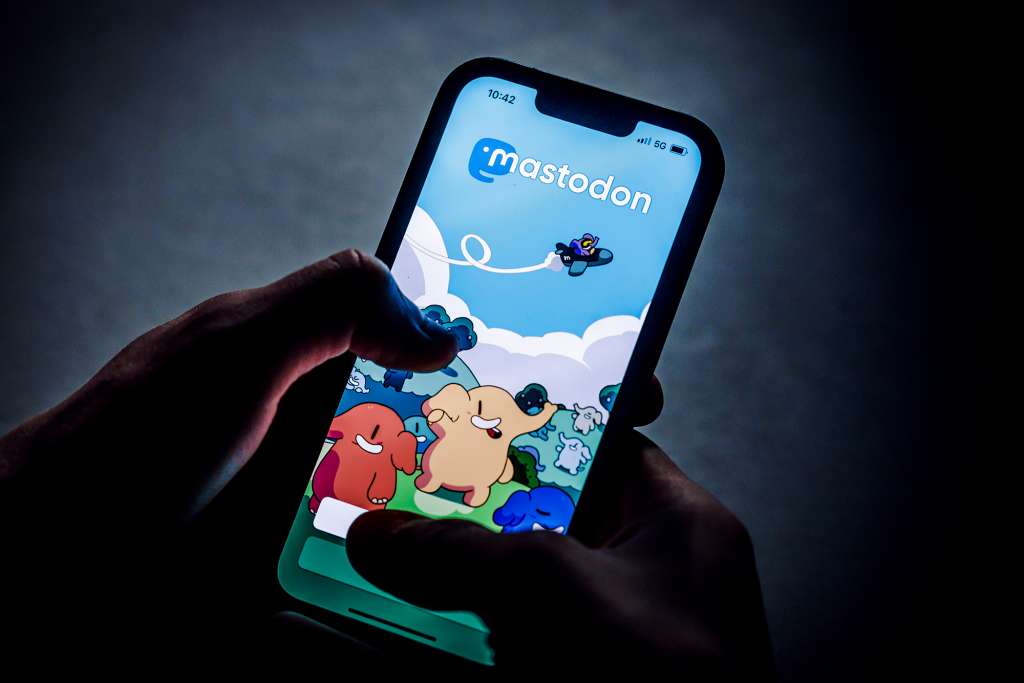(CNN) — After Sarah Oh lost her job as a human rights advisor at Twitter late last year in the first round of layoffs following Elon Musk’s chaotic acquisition of the company, she decided to join a friend in building a rival service.
With Gabor Cselle, who previously worked at Twitter and Google, she launched T2, currently available in beta. Like Twitter, it offers a social feed of posts with 280-character limits. But the key selling point, according to Oh, is its focus on safety.
“We really do want to create an experience that allows people to share what they want to share without fearing risk of things like abuse and harassment, and we feel like we’re really well positioned to deliver on that,” Oh told CNN.
In the months since Musk completed his takeover, a small but growing number of services have launched or gained traction by appealing to users who are uncomfortable with the billionaire’s decisions to slash Twitter’s staff, rethink content moderation policies and reinstate numerous incendiary accounts that were previously banned, among other moves.
The list of newer entrants in the markets includes apps like T2 and Spill created by former Twitter employees, a startup backed by one of Musk’s Twitter investors, and a service from former Twitter CEO Jack Dorsey. While some apps like T2 strongly resemble Twitter, others take a different approach.
Last month, for example, the founders of Instagram announced Artifact, “a personalized news feed” powered by artificial intelligence, a description that quickly earned it comparisons to Twitter. In CNN’s recent test of the app, however, it resembled news reader applications like Apple News or the defunct Google Reader. Artifact displayed popular articles from large media organizations and smaller bloggers in a main feed, tailored to users based on their activity and selected interests.
But all of these apps appear to be vying for the opportunity to scratch the itch users may feel for a news feed that isn’t Twitter — at least for as long as that itch lasts.
“Something that we’ve heard a lot from people who are moving over from Twitter, either partially or fully, is that it is just for them a nicer experience overall,” said Jae Kaplan, co-founder of Anti Software Software club, the group that develops Cohost, a text-based social media feed similar to Twitter. The service launched publicly in June of last year, after Musk offered to buy Twitter. In November, after Musk completed the takeover, the platform saw a surge in activity, adding 80,000 users within 48 hours.
“People have been referring to us when they do as a Twitter alternative, which I think is an important distinction from a Twitter replacement,” Kaplan said.
Replacing Twitter, with its robust network of journalists, politicians and entertainers and sizable audience of users obsessed with real-time news, may be a challenge. While apps like Cohost have seen renewed momentum, their audiences remain a small fraction of the size of Twitter, which had more than 200 million daily active users as of last year.
Cohost currently has 130,000 users, only 20,000 of which are what Cohost considers active users, according to Kaplan. T2 has a waitlist in the five digits, according to Oh, who says that number continues to grow. Mastodon, the most high-profile recent Twitter rival, hit 2.5 million users in November, but it has since declined to 1.4 million users, in a possible cautionary tale to other services.
“The incumbent has the advantage of scale, and even in a situation where you have kind of a polarizing figure like Musk take over Twitter, people are realizing that the newer platforms are not nearly as effective from a one-to-many, getting your message out there,” said Tom Forte, a senior research analyst at D.A. Davidson. “Despite the fact that there may be disgruntled consumers, they’re still tweeting.”
In November, shortly after taking over the company, Musk repeatedly claimed Twitter continued to hit “all-time high” user numbers despite the initial wave of users calling to abandon the social network. (As part of the acquisition, Musk took Twitter private and the company no longer reports user numbers in quarterly securities filings.)
“If people leave, where do they go? By all accounts, there is no platform right now that is able to take on the function of Twitter, and nothing is really prepared for it,” said Karen North, a clinical professor at the USC Annenberg School for Communication and Journalism. “No platform has the global user base, representing people from all walks of life the way that Twitter does.”
To complicate matters for rivals, some of the initial fury and media attention about Twitter under Musk has arguably faded in the months since the deal closed. Though controversy remains, many Twitter users may feel less urgency to jump ship today than in late October.
Still, Mastodon founder Eugen Rochko is not worried.
“A platform cannot continue to go viral perpetually,” Rochko recently told CNN about Mastodon’s sagging user numbers. “The cycle of media news and attention on social media just simply goes away after awhile, but behind it leaves organic growth which is what we had before November and which we still have now.”
The-CNN-Wire™ & © 2024 Cable News Network, Inc., a Time Warner Company. All rights reserved.

